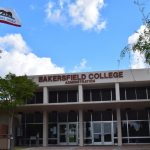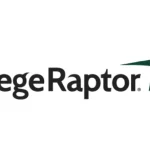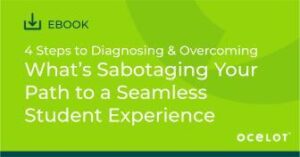With the steady rise of cost of living, one of the greatest barriers to students completing their higher education is affordability. That is why it is more critical than ever for a college or university to double down on its Financial Aid efforts.
At the same time, Title IV (Federal Financial Aid) program regulations can be very precise and change periodically (take, for instance, the FAFSA Simplification Act, which will kick off a series of several changes that will impact institutions and students). It is crucial that these regulations be followed exactly in order for an institution to be in compliance, and thus, eligible to provide federal financial aid to its students.
A key component of Title IV compliance is disclosure of consumer information. This refers to how institutions inform their students of their rights and responsibilities as financial aid recipients, and eligibility for various programs. But with so many students and limited time, it is a challenge for Financial Aid staffers with limited resources to answer every question and stay proactive with communications. Luckily, new technologies that are purpose-built for higher education have been developed to help Financial Aid departments overcome this obstacle!
AI Technology Built for Higher Education
Colleges and universities are rapidly recognizing that AI Communication technology like Ocelot’s AI-powered Student Communications Platform can dramatically support and scale employees’ ability to inform and engage students, remind them of deadlines, and assist them in tasks like the completion of forms.
Best-in-class AI-powered Communication Solutions like Ocelot’s go beyond Generative AI (GAI) to also embrace Human-Centered AI (HCAI). We focus on enhancing (not replacing) the exchange between students and higher education staff, resulting in more personal interactions. Ocelot accomplishes this by leveraging GAI’s deep learning to quickly and efficiently create new content and output, while never losing sight of the end goal: to enhance human decision-making by providing personalized insights and recommendations based on individual preferences and data.
It is this approach combined with a vast higher-education-specific AI knowledge base that powers Ocelot’s Chatbot, Live Chat and Two-Way Texting solutions, enabling over 500 universities and colleges to guide students through their journey and explain critical and complex topics like Financial Aid.
What Is an AI Knowledge Base?
We mentioned in the previous paragraph that Ocelot’s AI-powered Student Communication solution is built on a higher-education-specific knowledge base, but what exactly does that mean? An AI knowledge base is a library or repository where data is stored, organized, and distributed by AI solutions like a chatbot, enabling it to provide users with accurate answers to any questions they may have.
Building an AI Knowledge Base: With a Partner or In-House?
In the context of higher education, an AI knowledge base will house information on student housing, events, and, of course, financial aid. To build out this knowledge-base, you have two choices: building it yourself or with the expertise of a partner like Ocelot.
For the former option, your team would need to secure a chatbot provider, then feed the solution all the institution-specific and wider industry content (such as FAFSA information and instructions). This can often be time consuming for already strapped higher education staff. Upon purchase, this can delay the time to implementation and ROI. As updates are made to regulations, it is incumbent to staff to go in and make changes to the knowledge base itself.
On the other hand, Ocelot’s team is continually building upon our higher education knowledge base, creating new content and expanding the topics for our Chatbot, Two-Way Texting, and Live Chat solutions to draw from. This means that we are constantly adapting content to reflect regulatory updates, industry trends, and beyond to ensure that all information is helpful and, even more important, compliant — all without the need to add to college and university staff’s considerable to-do lists.
5 Tips for Using AI to Keep Financial Aid Information Current
As schools embrace this new technology, it is important that they do so in a sustainable way, especially when considering that, according to a recent Ocelot study, 74% of faculty and administrators agree that financial constraints are a significant challenge for higher education.
Additionally, focusing on making financial aid information more available to students can go a long way toward reducing friction for students when it comes to paying for college, especially for first-generation students (87% of institutions agree that when students can’t easily access admissions information and lack the appropriate support, they are less likely to complete applications).
Since federal and state financial aid programs, and their respective rules and regulations change over time, it is imperative that colleges and universities have a process for flowing those changes into the knowledge base of an AI Communications platform.
Here are 5 tips that will help you ensure that your AI knowledge base stays current and compliant:
Tip 1: Establish Key Dates and Deadlines
Establish a master calendar of key dates and deadlines. Within the AI knowledge base, these dates can include filing dates, triggers to remind students of relevant pending deadlines, and also dates for reviewing outdated content.
These dates can go a long way to ensuring the knowledge base is updated as necessary and that students are nudged along the way to completion of their financial aid paperwork and applications.
Tip 2: Keep Language Approachable
Balance financial aid jargon with student-friendly descriptions. Since federal and state financial aid programs are regulated, you need to be sensitive to how you describe these particular aspects of financial aid. If you are not careful, you can easily describe a program or a process in a way that is not fully compliant.
At the same time, it is a good idea to take the extra time to make clear what certain terms – such as RT24, SAP, Title IV, 1098-T – stand for. Describing these terms in a way that can help a student, especially a first-generation student, grasp the concept can be hugely beneficial to their understanding of financial aid.
Tip 3: Guide Students to Existing Resources
You may have terrific resources already in place to help explain financial aid to your students. If so, that is tremendous. If you do, be sure to guide conversations taking place on your AI Communication Platform to these resources when a student can benefit from them.
For example, if you have a web page or other online resources that contain helpful information for students, be sure to link to them in your AI knowledge base whenever financial aid questions are asked. The link can be as simple as an appendage to answers that says: “If you want to learn more about financial aid at our college, click here.”
Tip 4: Prioritize Knowledge Base Governance
Create accountability around knowledge base maintenance. We have found that about 60% of student conversations with AI chatbot technology has something to do with money, paying for college and financial aid. We know it’s a critical topic for students, so it’s important that the knowledge base is current.
If you are building an AI platform in house, be sure to assign clear accountability for ongoing maintenance as state and federal programs change. If you are licensing the technology from a provider such as Ocelot, be sure to know what they are willing to do on their end to support the maintenance of the content.
Tip 5: Make How-to Content Accessible
Subscribe to a library of online videos that explain financial aid terms and walk students through key applications such as the FAFSA. Ocelot is a provider of such a service. These videos are a great resource for visual learners. They also complement all of the text content in your knowledge base.
In many respects, these videos are a must-have. For example, if a student interacts with your AI knowledge base and asks for help completing the FAFSA, the AI will clarify what FAFSA year the student is applying for (eg. 2021-22 or 2022-23) and a series of tutorials will be provided to guide the student through the application.
Wrapping Things Up
Financial Aid is a critical topic for students. For colleges and universities that either create or license an AI Communication Platform, it is important to think through how best to maintain financial aid content over time, and take care to make it both student-friendly and current. Doing so will put the institution on a path toward creating an AI Communication Platform that nails the “paying for college” piece, and effectively engages students and supports their success.
Want to learn more about how Ocelot’s AI-powered Student Communications solutions can help you provide the most up-to-date, compliant Financial Aid information to your students? Talk to our expert team today!














